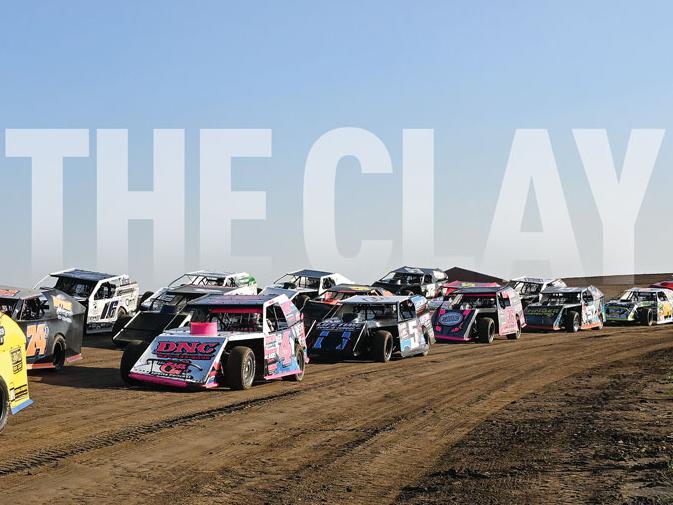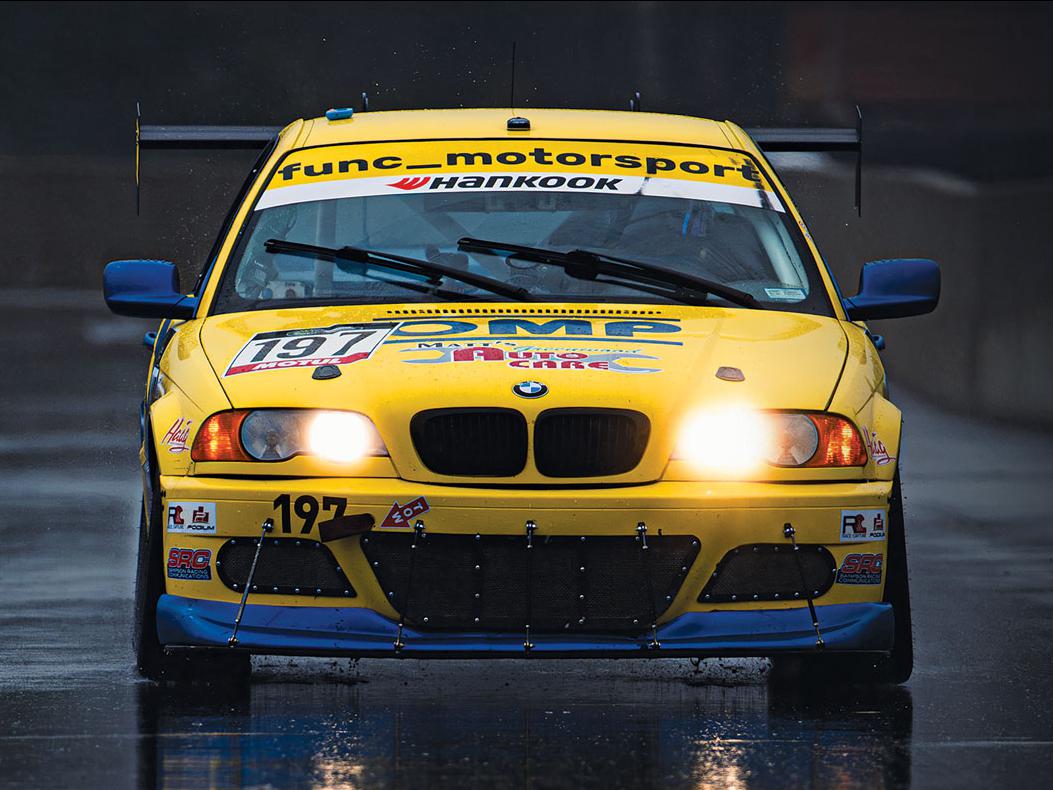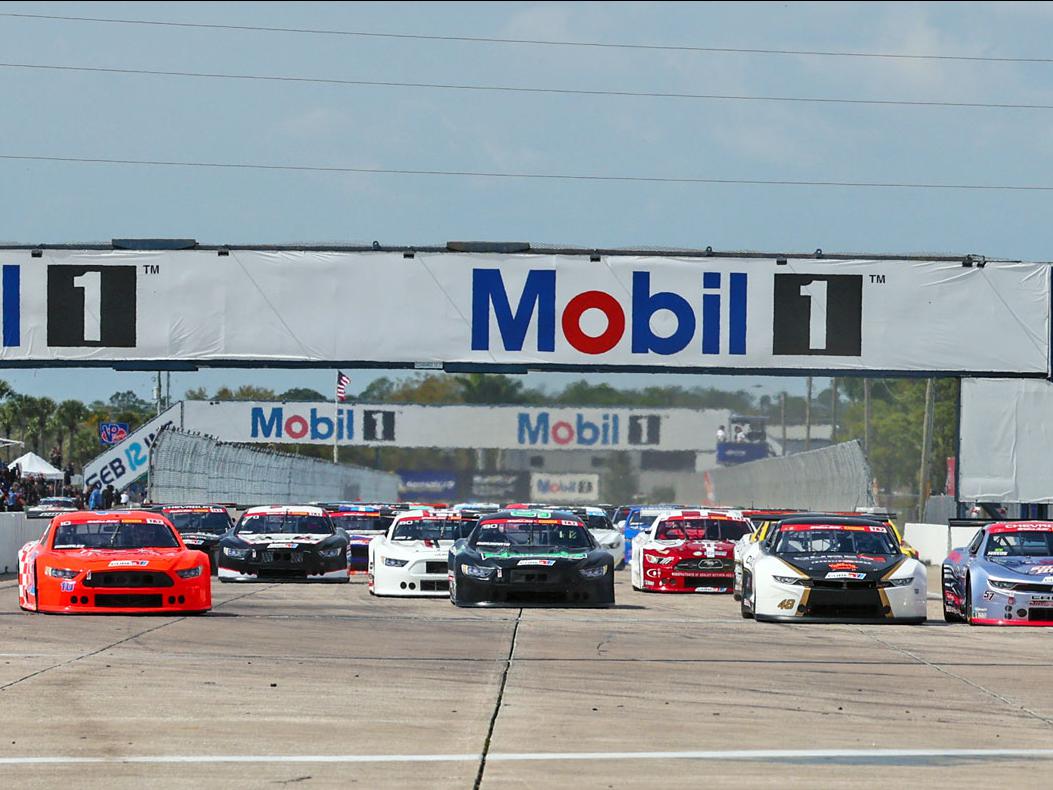Shift on the Clay: Modifieds

Modified racing is steering toward a safer future with recent engineering advances and a continued push to encourage additional safety products.
It's debatable whether safety in the loud and dust-choked arena of dirt modified racing has kept pace with the technological advancements seen in other high-profile series. Sanctioning bodies point to a strong safety record and consistent efforts to analyze accidents and adjust the rules, as needed. Manufacturers say the rules should not just recommend but require the latest and most advanced safety gear.
Modifieds are somewhat the blue-collar soul of small-town dirt tracks where bleacher crowds cheer the sideways action and admire the raw character of the machines and their drivers, who chase victories not for fortune but for pride and legacy. Modifieds look like they were born in a family garage, and they constantly remind us that the heartbeat of racing carries on under low-slung lights every summer weekend at local venues.
Still, there is the ever-present risk of danger on those clay tracks, and some would say an even greater threat in modified classes that race on asphalt where the speeds are much higher. Fortunately, safety advancements made in NASCAR and other top-tier racing series have trickled down to grassroots levels. Multi-layer driver suits are lighter and more comfortable, yet they're much more fire resistant than in years past. New materials and design elements have improved helmets, and head-and-neck restraint devices have clearly reduced injuries in high-speed crashes. The key to benefiting from these advancements is getting drivers to use the new equipment, either by sanctioning body and track mandates or intense education programs.
The race car itself is also at the heart of safety efforts in the modified division. The cars are engineered with purpose and feature crumple zones designed to absorb energy in a crash, improved roll cages, and modern fuel cells with safety features to prevent spills in a rollover.
Sanctioning bodies and continued education awareness aren't always enough to promote a rigorous safety culture in modified racing, where risk is part of the sport's seductiveness. It also takes personal responsibility where cost is often a limiting factor, or where racers simply believe "nothing will ever happen to me."
The problem is that safety consciousness is often driven only by tragedy, so that is why peer-driven understanding of safety benefits is necessary from within the industry. With that in mind, here are capsule reports from a sampling of sources associated with modified racing, including sanctioning bodies, car builders, and safety equipment manufacturers.
B&B Racing Chassis
As a builder of modifieds, Paul Burger's Belle Plaine, Minnesota-based shop has to deal with inconsistent rules between sanctioning bodies. Some may set a minimum of 1.500-inch diameter tubing in the roll cage or 1.625-inch, while others mandate 1.750-inch.
"That can be confusing," he said. "But we believe that an inch-and-three-quarter cage is the safest, so that's how we build all our cars. Compared to the cars 20 years ago, we have more X-bracing and more structural integrity."
The shop relies on 30 years of experience and "street smarts" to design the frames and corresponding components. "A lot does come from trial and error. You're always playing with what needs support and where to put extra metal," added Burger. "As far as the evolution of safety, the containment seats are a big factor. And we have some customers who will not have a race car unless it has a fire-suppression system.
"If you're looking to buy a race car, you definitely want to go with someone who has been doing this for a long time," said Burger. "There are so many people just starting to build cars and go off copying whatever they find, and then you don't know what kind of tubing and wall thickness they're using. Invest as much as you can into safety and go with a reputable car builder with a proven safety history."
ButlerBuilt
"Dirt modifieds aren't hitting the wall as hard as asphalt modifieds," observed Domenic Bickford of the seat manufacturer based in Concord, North Carolina. "The Whelen Modified Tour has a good set of safety regulations, but I know on the seat side we've seen people run just about anything on asphalt—so it hasn't been our primary market."

ButlerBuilt places emphasis in containing the driver's head when designing its aluminum seats. "It's all about making sure that modified guys are really set in their seats versus having too much room," said Domenic Bickford.
The modified market has been opening up more for the company after a chassis builder in the Northeast started promoting the company's seats. "Big block modifieds are a unique chassis. We had to develop a seat that was specifically engineered to even fit in those cars," said Bickford.
ButlerBuilt offers a variety of seat sizes and back angles to suit different types of racing. "All our head buildups are the exact same as our NASCAR buildups, as far as material goes," added Bickford. "There's really a lot of emphasis on the head. When you crash, your head picks up speed before it hits the head foam. If you can close that gap, the head won't gain as much speed. It's all about making sure that modified guys are really set in their seats versus having too much room."
CASM Safety Products
In 2014 Scott Coffman witnessed his son-in-law break a vertebrae in a race. As an engineer developing parts for the sprint car market he sought to take some of the load off a driver's spine. His idea was the Compression Absorbing Seat Mount or CASM.
"In 2015 I made different prototypes and partnered up with Ron Shaver of Shaver Specialties. He helped me get it patented and in front of a bunch of people," recalled Mooresville, North Carolina-based Coffman.
The system basically has four attachment points on the chassis: two under the seat and two on the upper back of the seats. These points can be clamp-on or weld-on. The set on the bottom has foam inserts that absorb energy from an impact or even a rough track. The upper set is designed to allow and control the vertical seat movement.
"We have impact foam that's durometer rated for different body weights," explained Coffman. "We've tested a clamp-on system, and it reduces 68.9% of impact away from the driver. Recently we tested the weld-on system, and it does 74.5%."
While the system works in some capacity in every direction, it's designed for "frame to earth" impacts. "But we get a lot of guys in modifieds and Late Models and all kinds of different cars. It works with carbon fiber or aluminum seats. You just have to have clearance under the seat to mount the system. The clamp-on raises the driver up 1 inch, and the weld-on doesn't raise the driver at all," said Coffman.
While packaging can be difficult in some vehicles, cost is the most repeated reason that racers voice when shying away from the product. "Nobody wants to spend $1,500 on a system that helps keep you from breaking your back or keep you walking upright when you're an older man," said Coffman. "They'd rather spend $2,000 on a helmet wrap or wing lettering."
GRT Race Cars
In building modifieds, Keith Brown said sanctioning bodies don't require what he calls a "drag bar" in the roll cage. "It's a bar over the driver's shoulder, and it protects the driver," said Brown, whose shop is in Perryville, Arkansas. "We started putting it in our cars around 2019 after there were a couple of deaths. It's something that's been used in other types of racing."
Brown has also been challenged with addressing different rulebooks and the tube-size requirements when building frames.
"You know, drivers do want a lighter car. It's going to flex differently than a heavier car," said Brown. "A lot of guys will build a car just for one sanctioning body and they won't run another division. Other guys will get a car with inch-and-three-quarter tubing from us and run two sanctioning bodies."
Brown said seat development has come a long way in improving safety in the modified class, and he's also looking to protect those seats.
"We also do something on our cars that's not required by any rules," he added. "We have a plate in front of our four-bar (suspension component), so that if you broke a four-bar it wouldn't come through the seat."
International Motor Contest Association (IMCA)
By sanctioning hundreds of events at nearly 250 tracks across the country and Canada, IMCA in Vinton, Iowa, has a huge responsibility in reviewing and advancing safety guidelines in addition to helping control costs for the racers.
"We do our best to always promote what we consider to be the minimum safety standards that our competitors should be following, and then allow them to improve," said Brett Root. "We obviously want our competitors to be as safe as possible and at the financial means that most of them have. Some of this equipment can be extremely expensive. It's hard for us to mandate equipment and components from a safety standpoint that they can't afford."
IMCA drivers are required to wear fire suits, Snell-rated helmets with a fireproof lining, fire-retardant gloves and shoes, and run a five-point harness.
"And it's not unusual to see a guy run a fire-suppression system or the shoulder-supported seats," added Root. "The equipment you see evolve out of Cup racing does migrate down to our markets and is available to racers. It's just whether or not they can afford it, and they make that choice. We don't try to force that upon them because, again, we can write rules that nobody can afford to follow.
"We do an awful lot of communicating with racers every day, every weekend—also promoters, tech officials. We use those communications and at-track experiences if we see accidents," continued Root. "Things that might catch our attention—okay, is there something here that needs to be addressed? We have rule meetings with our core employees. We usually pull a racer or a promoter into those conversations."
Root pointed to fuel cells as an example of attending to safety needs. For a number of years, fuel tanks weren't required to have check valves or flapper valves. "If the car got upside down, we had some serious problems. We had people get hurt," he said. "So, we pushed toward better rollover technology. Also simple things. For years racers just Dzus-fastened mud covers on the wheels. We had a problem with them coming off and hitting people. We were one of the first that mandated that you had to bolt them on."
Shaw Race Cars
Collapsible steering shafts are one of the biggest safety improvements available for modifieds, according to Kevin Shaw of the Batesville, Arkansas, car builder. Unlike Late Models that have a slightly different steering arrangement, the steering boxes in modifieds are mounted close to the front bumper.
"If you go into the wall, that's a straight shot of the steering shaft back into the driver," said Shaw. "A collapsible shaft can absorb 10 or 12 inches before the steering wheel moves toward the driver. I consider that a must putting a car together in this day and time."

(Left image) Shaw Race Cars adds a halo bar to each of its chassis to help protect the left side of the driver. "The good part is that it doesn't restrain the driver from getting in or out," said Kevin Shaw. (Right image) A collapsible steering column is a "must" on modifieds built at Shaw Race Cars, due to the location of the steering box close to the front bumper. "If you go into the wall, that's a straight shot of the steering shaft back into the driver," said Kevin Shaw.
Another key safety innovation in modifieds is the "halo bar" that's positioned on the left side of the driver and helps close a gap in the frame structure where a tire or other large debris could invade.
"I think [Kevin] Rumley [formerly] from Longhorn [Chassis] was the first one to introduce that bar several years ago," said Shaw. "I know WISSOTA has started requiring it, but I don't think any other sanctioning body requires it, yet. The good part is that it doesn't restrain the driver from getting in or out."
Shaw is also a fan of full-containment seats, even though he's actually selling fewer seats these days. Car builders used to inventory seats since there are just a few universal sizes. Now drivers often purchase directly from the seat manufacturer.
"We're seeing more and more custom-made seats with foam that's made to contour your body. From a safety viewpoint it's better, and you're not getting tossed around in your seat. So you likely feel better the next day," said Shaw.
The Joie of Seating
Former NASCAR driver and seat builder Randy LaJoie, based in Concord, North Carolina, is pushing modified sanctions to mandate a seat safety certification similar to what NASCAR mandates for its series. For example, regarding an SFI 39.1 certified seat, which his company offers, "to get that certification the seat has to take a 100-G hit."
Lajoie stressed that modifieds running on asphalt carry risk because of the increased speeds.
United States Modified Touring Series (USMTS)
Darlo Mulder said USMTS in Webster City, Iowa, hasn't made any significant changes to the safety rules in recent memory, and the series hasn't experienced any serious accidents. However, there was an accident at a sanctioned track that drew officials' attention.
"The race wasn't related to our sanctioning body. The driver was fine, but the roll cage did fail," said Mulder. "There was a concern about a rule change across the board, not just our sanctioning body. But after review [of roll cage standards] we decided that everything was where it needed to be."
Safety is stressed by USMTS, and equipment like fire suppression is highly recommended. Yet, Mulder has argued with drivers who sometimes try to skirt the safety requirements.
"Some don't want us to require a window net, and I refuse to take that out of our rulebook," he said. "Some drivers don't think about safety, they just want comfort. But I'm the one who has to think about their safety."
To more like this for free, sign up for a digital subscription to PRI Magazine on Zinio here.
Once you download the Zinio mobile app or are logged into Zinio on a desktop browser, you will gain immediate access to more than a year's worth of content, including "Shift on the Clay" here and more road racing coverage in the August 2025 issue here.
Sources
B&B Racing Chassis
facebook.com/bbchassis/
ButlerBuilt
butlerbuilt.net
CASM Safety Products
facebook.com/CASMSafetyProducts/
GRT Race Cars
teamgrt.com
IMCA
imca.com
Shaw Race Cars
shawracecars.com
The Joie of Seating
thejoieofseating.com
USMTS
usmts.com
 MEMBERSHIP LOGIN
MEMBERSHIP LOGIN JOIN PRI
JOIN PRI


